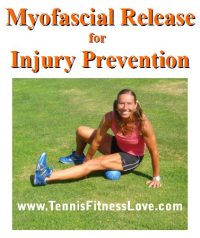Trigger points are small, extremely painful spots in your muscles. If you push on these spots, you will feel agonizing pain and will want to pull away. Trigger points can develop as a result of muscular injuries or trauma, improper body mechanics or structural imbalances, poor nutrition, lack of sleep, stress, over-training, and more. Trigger points inhibit proper function of the muscle fibers and therefore create more problems. Generally, once the trigger point is created, it does not want to relax on its own and it needs to be helped.
Trigger points can exist in the muscle bellies or tendons that attach to the bone. Often trigger points create a referred pain— pain that is somewhere else than the trigger point itself. For example, you push on a trigger point in your hip and you might feel pain in your knee. The level of pain depends on the level of irritability of the trigger point. Sometimes a trigger point in the tiniest muscle can cause the most extreme pain. Even tension headaches, migraines or stiff neck can be expression of referred pain. A lot of chronic injuries are caused by trigger points. It is very difficult to diagnose and treat trigger points, as they often refer pain to other parts of the body. Therefore, it is very important for you to be in touch with your body by always looking for trigger points and releasing them before they can create more problems in the future.
Myofascial release will help to get rid of the pesky trigger points. Muscles (myo) and organs in the body are connected or separated by a band of a connective tissue that is called fascia. Fascia is a specialized, tough layer of connective tissue that surrounds muscles, bones and joints and gives support and protection to the body from head to toe. Fascia is extremely strong and usually transmits mechanical tension generated by muscle activity and external forces. When there is a chronic tension, the fascia hardens, thickens, and restricts the free muscle movement and that leads to even more dysfunctions. Micro-tears of the tendons can develop. Myofascial release is a technique where you “massage” and stretch the fascia, so it will return to its original soft and subtle texture. As a result, the stress on the surrounding tissues will decrease and your injury will go away. You can seek a professional who specializes in myofascial release or you can use this technique on yourself with help of a foam ball.
This myofascial release booklet will teach you how to help yourself, especially if you have issues with chronic injuries. Finding and massaging away the trigger points, and performing myofascial release regularly will prolong your athletic career, increase the functionality of your muscles and decrease the injuries that you suffer. Your performance and tennis game will improve dramatically.
 Content
Content
1. Trigger Points and Chronic Pain
2. Foot Myofascial Release for Plantar Fasciitis
3. Lower Leg Myofascial Release for Shin Splints
4. Calf Myofascial Release
5. Quadriceps Myofascial Release for Knee Pain
6. Hip Flexor Myofascial Release for Lower Back Pain
7. TFL Muscle Myofascial Release for Hip Pain
8. IT Band Myofascial Release for Knee Pain
9. Piriformis Myofascial Release for Sciatica Pain
10. Hamstrings Myofascial Release for Lower Back Pain
11. Upper Back Myofascial Release for Neck Pain
12. Chest Myofascial Release for Shoulder Pain
13. Myofascial Release Recovery Routine
Price: $2.99
.




